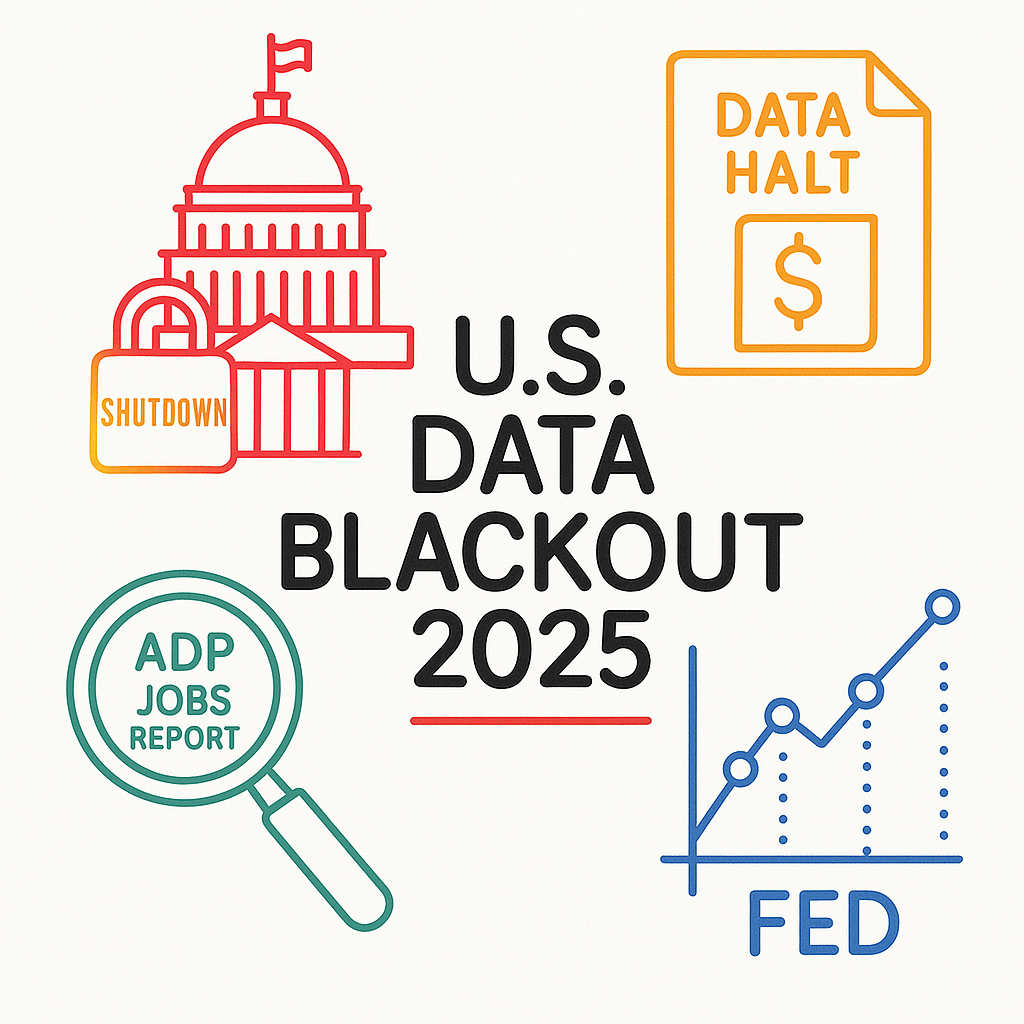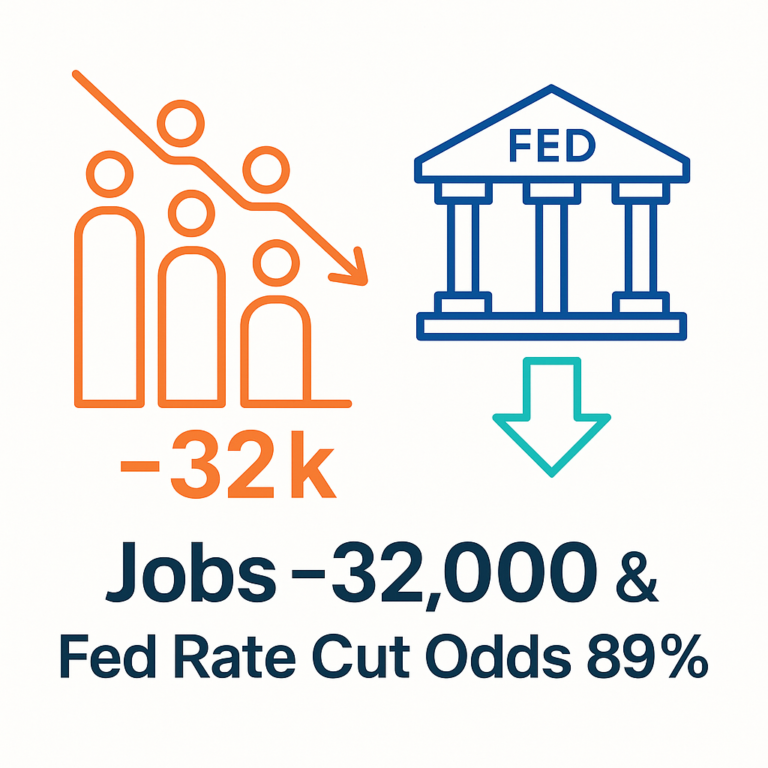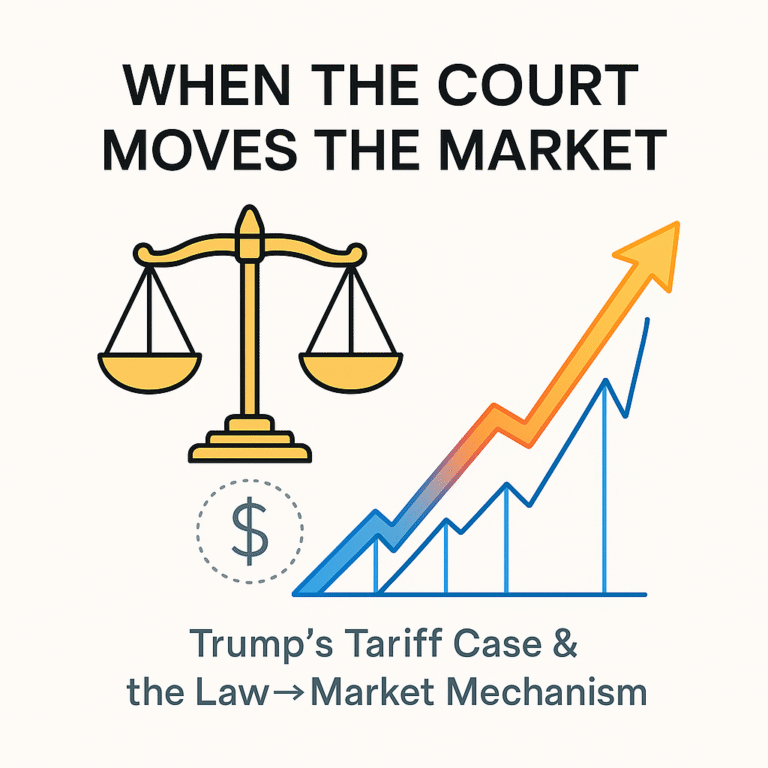U.S. Government Shutdown Economic Data Halt: How Fed Policy Without Official Reports Relies on Alternative Indicators for Investors
The U.S. government shutdown halted key data releases, leaving the Fed without official reports. Investors now watch alternative indicators like ADP jobs data.
Key Takeaways
✔ The U.S. government shutdown caused an economic data halt, forcing the Fed to operate without official reports.
✔ Investors are turning to alternative indicators such as ADP jobs reports and online inflation trackers.
✔ Fed policy without official data relies on private sources, which carry risks and limitations.
✔ The ADP jobs report shutdown impact shows how markets react strongly to private data.
On October 1, 2025, the U.S. government shutdown triggered an economic data halt. Agencies like the Bureau of Labor Statistics (BLS), the Bureau of Economic Analysis (BEA), and the Census Bureau stopped releasing critical reports. This means the Fed and investors face weeks—possibly longer—without the official data that normally guides policy.
The Federal Reserve is accustomed to making decisions based on jobs, inflation, and growth numbers. But Fed policy without official data is far more uncertain. Investors must rely on alternative indicators for investors, such as private payrolls and online price indexes, to fill the gap. This raises an important question: how reliable are these substitutes during a shutdown?
How the U.S. Government Shutdown Economic Data Halt Unfolded
When Congress failed to pass a budget on October 1, 2025, the government entered a shutdown. Nonessential staff at BLS, BEA, and the Census Bureau were furloughed, creating a data blackout.
This shutdown economic data halt delayed major releases such as the September nonfarm payrolls and CPI report. While past shutdowns averaged about eight days, this one hit precisely during a critical reporting window, amplifying the disruption.
Why Fed Policy Without Official Data Is So Vulnerable
The Fed normally bases interest rate decisions on CPI, GDP, nonfarm payrolls, and retail sales. Losing these benchmarks leaves monetary policy flying blind.
Without its usual tools, Fed policy without official data must lean on private signals. RBC notes that policymakers will likely use ADP payrolls and online inflation trackers. But the reliability gap between official and private numbers exposes risks for both the Fed and markets.
Comparing Official Reports With Alternative Indicators for Investors
|
Official Data |
Role |
Private Alternative |
Pros & Cons |
|---|---|---|---|
|
Nonfarm Payrolls |
Labor market benchmark |
ADP Jobs Report |
Faster release, private sector only, often diverges from BLS |
|
CPI |
Inflation measure |
Online Price Indexes |
Real-time updates, sampling issues |
|
Retail Sales |
Consumer demand gauge |
Credit card / POS data |
Timely trends, limited scope |
|
Business Investment |
Growth driver |
ISM & PMI surveys |
Leading signals, manufacturing bias |
|
Job Openings |
Labor demand |
LinkedIn, Indeed, Homebase data |
Tracks hiring demand, may overstate actual jobs |
For investors, these alternative indicators for investors offer timely insights but lack the consistency of government statistics.
ADP Jobs Report Shutdown Impact on Markets
The ADP jobs report shutdown impact was immediate. In September 2025, ADP showed a decline of 32,000 private payrolls, sharply missing forecasts of +50,000.
With the official nonfarm payrolls delayed by the government shutdown economic data halt, markets treated the ADP release as the primary labor signal. Treasury yields fell, and equities traded mixed.
But the episode also revealed ADP’s limitations. The report often diverges from BLS figures, underscoring the dangers of relying too heavily on one private dataset during a data blackout.
Market and Policy Scenarios in a Data-Blind Economy
If the shutdown ends quickly
- Data releases resume after short delays.
- Market volatility eases as official benchmarks return.
- The Fed can recalibrate with stronger footing.
If the shutdown drags on
- Fed policy without official data deepens its reliance on private sources.
- Conflicting signals among alternative indicators for investors fuel uncertainty.
- Business sentiment weakens, raising recession risk.
For investors
- Cross-validate private reports rather than relying on one dataset.
- Manage risk exposure as volatility rises.
- Stay alert for sharp corrections once delayed official data are released.
The U.S. government shutdown economic data halt is more than a political event—it has left the Fed without its key compass. Policymakers now face the challenge of guiding Fed policy without official data, while investors lean on alternative indicators to bridge the gap.
The ADP jobs report shutdown impact shows how quickly markets can move when official numbers are absent. For investors, the strategy is clear: use multiple data points, manage risk conservatively, and prepare for volatility when official reports eventually return.
References
- Reuters: How the U.S. government shutdown affects key economic data
- Reuters: U.S. private payrolls decline in September
- Business Insider: Alternative sources macro investors use during shutdowns
- RBC: How to navigate the U.S. government shutdown
- Investing.com: Shutdown threatens to disrupt economic data







